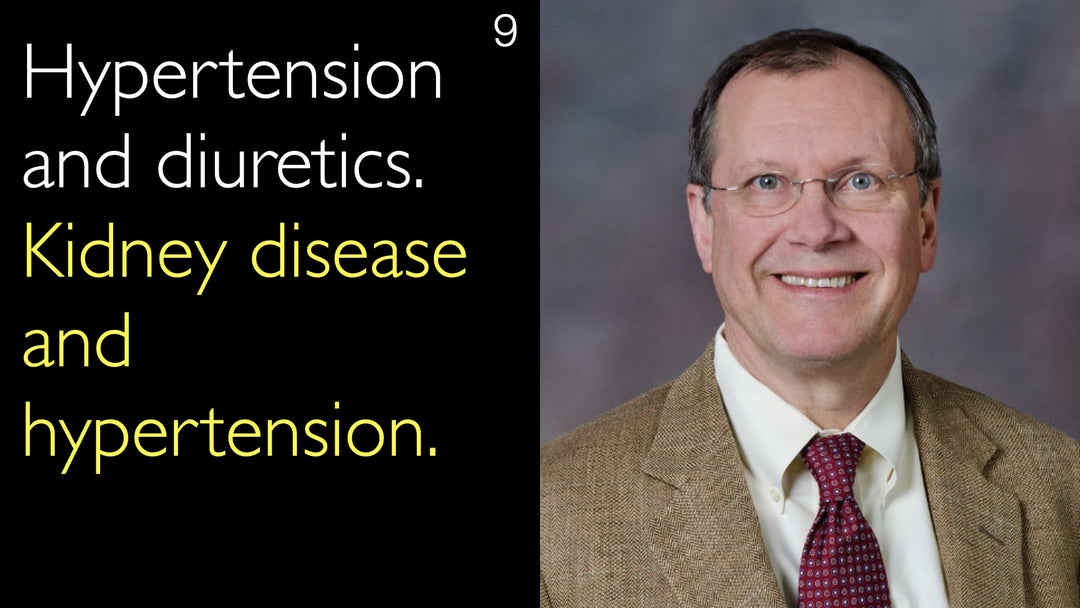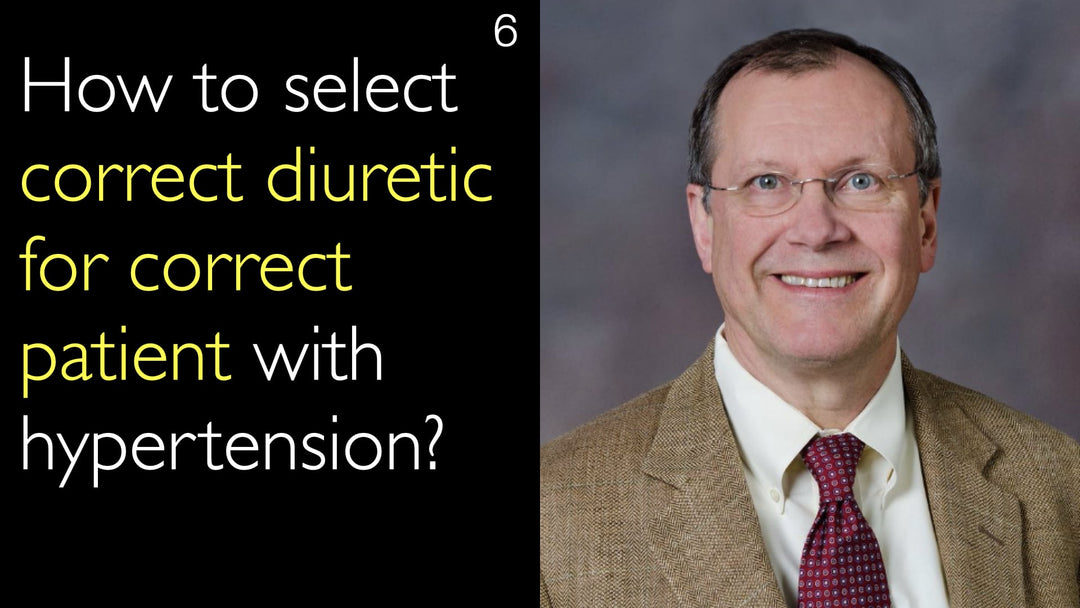ד"ר אנטון טיטוב, MD, מבהיר שינויים פיזיולוגיים קריטיים לאורך זמן.
מנגנוני הטיפול במשתנים ביתר לחץ דם ובמחלת כליות
קפיצה לפרק
- מנגנוני פעילות משתנים ביתר לחץ דם
- שינויים פיזיולוגיים לאורך זמן
- הערכת מצב הנוזלים
- גישה במחלת כליות כרונית
- הבדלים ביעדי הטיפול
- תמלול מלא
מנגנוני פעילות משתנים ביתר לחץ דם
ד"ר דייוויד אליסון, MD, מבהיר נקודת הוראה בסיסית לאנשי מקצוע רפואיים. הוא מסביר שמשתנים ביתר לחץ דם ראשוני אינם משמשים בעיקר להפחתת נפח הנוזלים החוץ-תאיים. ד"ר דייוויד אליסון, MD, מציין שזוהי תפיסה מוטעית נפוצה among clinicians. התגובה הפיזיולוגית הראשונית действительно כוללת הפרשת מלח ומים.
תהליך זה מוביל לירידה זמנית בנפח הנוזלים. עם זאת, האפקט האנטי-יתר לחץ דם העיקרי לאורך טווח נובע ממנגנון שונה.
שינויים פיזיולוגיים לאורך זמן
ד"ר דייוויד אליסון, MD, מתאר את השינוי הזמני המרתק בפעילות המשתנים. הוא מציין שלחץ הדם שווה לתפוקת הלב כפול התנגדות כלית. בתחילה, השימוש במשתנים גורם לירידה קלה בתפוקת הלב ועלייה בהתנגדות הכלית.
ד"ר דייוויד אליסון, MD, מסביר שהאפקט הנקי הוא עדיין הפחתה בלחץ הדם. במשך כשבועיים, נפח הנוזלים של הגוף חוזר toward normal. במקביל, ההתנגדות הכלית יורדת significantly. לאחר חודש, מצב הנוזלים של המטופל בדרך כלל normal, אך העורקיקים שלו מורחבים.
הערכת מצב הנוזלים
הראיון עם ד"ר אנטון טיטוב, MD, מדגיש פרמטרי ניטור מרכזיים. ד"ר דייוויד אליסון, MD, מדגיש שהערכת נפח אינה קריטית בטיפול ביתר לחץ דם ראשוני. זאת מכיוון שתיאזידים פועלים כמרחיבי כלי דם יעילים בהקשר זה.
ניטור רמות האשלגן נותר crucial בשל תופעות הלוואי הידועות של משתנים. הסברו של ד"ר אליסון מספק בהירות מדוע מעקב after weight ומצב נוזלים מודגשים פחות עבור חולי יתר לחץ דם המשתמשים בתרופות אלו compared to those with heart failure.
גישה במחלת כליות כרונית
ד"ר דייוויד אליסון, MD, מציב הבחנה קריטית עבור מטופלים עם פגיעה כלייתית. הוא קובע שהגישה "שונה מאוד" עבור מטופלים עם מחלת כליות כרונית חמורה, כגון stage four. במקרים אלו, עומס יתר בנפח הנוזלים החוץ-תאיים הוא דאגה ראשונית.
ד"ר אליסון ממליץ על בדיקה גופנית זהירה להערכת סימנים לעומס נוזלים. זה כולל הערכת בצקות, גודש ורידי צוואר וקרפיטציות ריאתיות. מטרת הטיפול משתנה fundamentally באוכלוסיית מטופלים זו.
הבדלים ביעדי הטיפול
ד"ר דייוויד אליסון, MD, מסכם את יעדי הטיפול המפוצלים based on patient diagnosis. ביתר לחץ דם ראשוני, משתנים מורידים את לחץ הדם primarily through הרחבת כלי דם systemically. המנגנון להרחבה כלית זו remains partially understood וסביר שהוא רב-גורמי.
לעומת זאת, עבור חולי מחלת כליות כרונית עם יתר לחץ דם, משתנים פועלים על ידי הפחתת נפח הנוזלים החוץ-תאיים. ד"ר אנטון טיטוב, MD, מקל על הבהרה זו של מסלולים טיפוליים נפרדים. שני המנגנונים מורידים effectively את לחץ הדם אך through גישות פיזיולוגיות fundamentally שונות.
תמלול מלא
ד"ר אנטון טיטוב, MD: המטופלים עם יתר לחץ דם המשתמשים chronically במשתנים—האם יש קריטריונים beyond level of לחץ הדם? ואולי level of אשלגן also important? האם יש בדיקות נוספות שהם יכולים לבצע?
ד"ר דייוויד אליסון, MD: זו שאלה מצוינת. מה שאני נוטה ללמד סטודנטים לרפואה and residents הוא שרוב הזמן, when we use משתנים ביתר לחץ דם—ביתר לחץ דם ראשוני—we're not using them to reduce the נפח הנוזלים החוץ-תאיים. and so, you really don't need to think about whether the patient has signs of congestion, because that's not why we are using the medications.
so, you give a תיאזיד to a patient with hypertension, and you measure their weight, their fluid status, and their התנגדות כלית. there's a very interesting phenomenon that still is not completely understood. but what happens is initially, the patient will excrete more salt and water; they pee out more salt and water in the urine. and that will reduce their נפח הנוזלים החוץ-תאיים.
and actually, there may be a rise in their systemic vascular resistance. recall that blood pressure is equal to cardiac output times systemic vascular resistance. and so initially, what happens is the cardiac output will go down a little bit, and the systemic vascular resistance will rise a little bit, but the net effect is a reduction in blood pressure.
but over the course of days—two weeks—that really changes. and the blood volume and the extracellular fluid volume typically return toward normal. it never totally normalizes, but it increases.
during the time that blood volume and the extracellular fluid volume and the weight increase, the systemic vascular resistance falls. so after one month or so on a thiazide diuretic, typically your fluid status in the body is pretty normal. but instead, your arterioles are dilated; you have a reduction in systemic vascular resistance.
ד"ר אנטון טיטוב, MD: how the diuretic causes the decline in systemic vascular resistance is still debated.
ד"ר דייוויד אליסון, MD: i think it's still very confusing. it's probably multifactorial. but this is why when we use thiazide diuretics to treat essential hypertension, we don't think that much about volume, because we are using them to be vasodilators really, and they're very effective as a dilator. so that's why we don't really think about volume in hypertension.
now, as I mentioned before, that's a very different situation than the patient with chronic kidney disease, especially severe chronic kidney disease. and there's no question that we look for signs of extracellular fluid volume overload.
so, if I have a patient in the clinic who has chronic kidney disease, stage four, and his blood pressure is 190 over 100, I will certainly try and do a careful physical exam and see if they have signs of fluid overload. and many times, those will need an actual reduction in their extracellular fluid volume.
and so, the use of the diuretic in that situation will be for a different purpose. at the end of the day, it still brings down blood pressure, but there it brings down blood pressure by reducing extracellular fluid volume. whereas in essential hypertension, it brings down blood pressure by causing systemic vasodilation.







